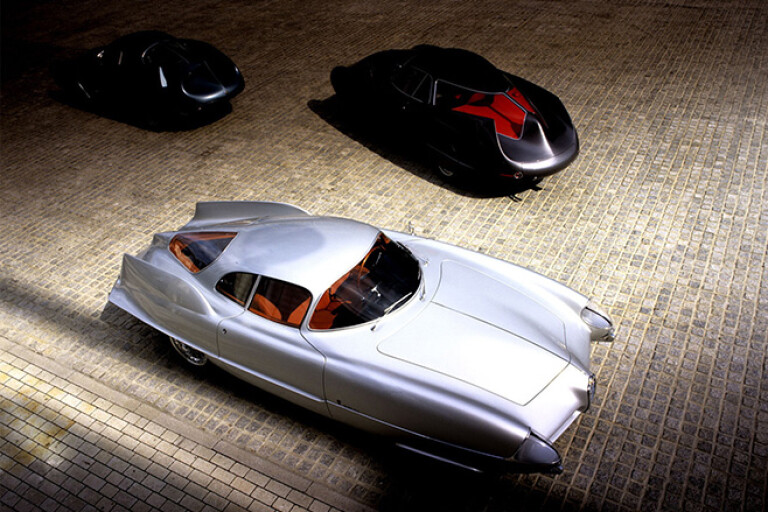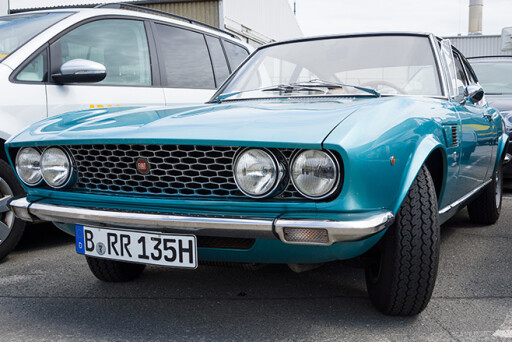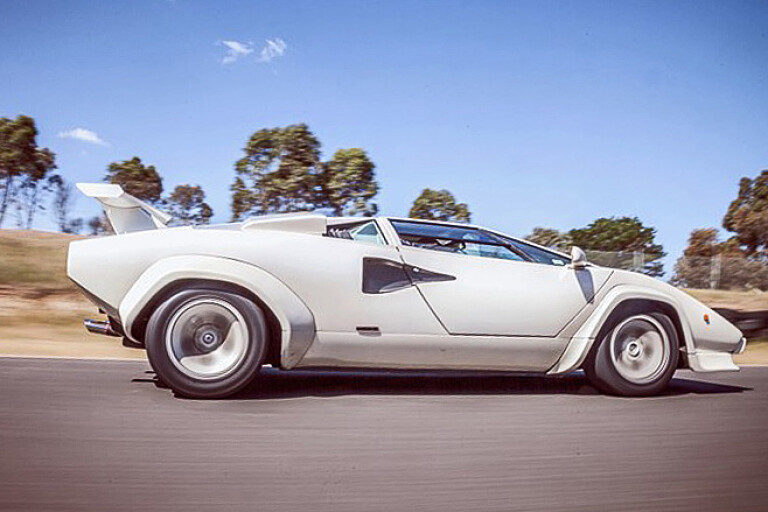
In the early 1950s when design (as opposed to engineering) was finally being recognised as an intrinsic part of selling cars, a series of extreme concepts changed the thinking on what a car’s shape should be. From an era of protruding tail-lights, acres of chrome and rocket-inspired detailing, to a period of cars that were sleek and flowing, inspired by wind-tunnel testing and the study of aerodynamics. The Alfa Romeo BAT by Carrozzeria Bertone heralded in a new era of car design.
Think of a sports car that screams speed and you’ll probably be picturing a torpedo-shaped bullet drawn by Bertone. The sleek, shark-shaped nose on the 1973 Alfa Montreal? Bertone. That pointy-snout 1971 Lamborghini LP500 prototype that spawned the Countach? Bertone. Even non-car enthusiasts recognise these cars as beautiful, covetable examples of car design.

Bertone was not one designer, though; it was a stable of exceptional designers assembled by impresario and visionary Giuseppe “Nuccio” Bertone. Nuccio founded and nurtured talented designers like Giorgetto Giugiaro, Marcello Gandini and Franco Scaglioni, and backed their uncompromised visions with his quality coachhouse building and vast selection of contacts. Bertone is the oldest Italian design coachhouse and possibly the most universally recognised because of the proliferation of iconic concepts pouring from Nuccio’s protégés.
In 1952, MG concept cars designed by Giorgetto Giugiaro led to a commission from Alfa for the Giulietta Sprint. Alfa had released its first standardised car in the early 1950s, and an Italian journalist wrote that he saw “lots of Romeos but no Giuliettas”, suggesting that the cars looked too masculine. The Bertone Giulietta Sprint, designed by Franco Scaglioni and shown in 1954, was presented as an embodiment of “la dolce vita”, a smaller, faster, slightly louche sports sedan (coupe, as indicated by the “Sprint” label) with elegant proportions and racing credentials.
At the same time, Bertone was releasing the BAT 5, 7 and 9 (designed by Scaglioni for Alfa) with stingray-like aerodynamics to display vehicles with the lowest possible drag co-efficient (BAT stands for “Berlinetta Aerodinamica Tecnica”). The BATs forced designers to consider aerodynamic flow, and the Giulietta became the symbol of Italian GT.

GT stands for Gran Turismo and represents a high performance vehicle – usually a two-door coupe – designed for spirited long-distance driving. Throughout the 1960s Bertone explored this concept with Alfa, Ferrari, BMW, Aston Martin, Fiat and Maserati, developing a signature swooping nose and spare, elegant lines towards the end of the decade. Consider the magnificent Iso Grifo, designed by Giugiaro in 1965 to compete with the Ferrari and Maserati GTs using Corvette and Ford components. Or how about the groundbreaking Lamborghini Miura, which was released a year later?
Innovative, beautiful and class-leading design poured from the doors of Bertone, demonstrating the breadth of talent at the coachhouse and clearly illustrating Nuccio’s master wrangling skills in keeping such high-profile egos under one roof.
The Alfa Montreal and the Fiat Dino coupe (from Gandini and Giugiaro respectively) featured Bertone’s signature long, low arching fenders and seductive fastback silhouettes. The Alfa was raked with shrouded headlights, though, and the Fiat Dino remained elegantly open.
 Fiat Dino. Credit: Shutterstock.
Fiat Dino. Credit: Shutterstock.
When challenged to show “the ideal car” by the UK Daily Telegraph, Bertone produced the Jaguar Pirana, with its longer swooping bonnet and more bullet-shaped back.
A year later Bertone reinvented its own look with an extreme-wedge form of the Alfa Carabo concept. A mid-mounted engine meant the nose could taper to a point, while louvres wrapped around the headlights for uninterrupted lines. The car also stood less than a metre at its highest point.
Then, just when you thought a car couldn’t get any lower and pointier, Bertone revealed the abstract, futuristic Lancia Stratos Zero; a car with a more abstracted side profile than anything ever seen and so low it could pass below a typical vehicle barrier.
Riding high on the success of this new design language Bertone expanded production and worked with Lamborghini to create epic profiles like the Espada and the Countach; a car often cited by non-car aficionados – as well as car-lovers – as the car they would want to own. The rich and varied output was testimony to Nuccio’s ability to extract the best from his talented designers.

Bertone flourished in the 1950s, 60s and 70s with its work for Alfa Romeo and Lamborghini (and others), but it flailed once its visionary died in 1997. The company rallied when Nuccio’s wife Lilli took over and oversaw the Pandion concept for Alfa, shown at the 2010 Geneva Auto Show.
The designer of the Pandion, Michael Robinson, was the last Design Director at Bertone, and the company went bankrupt in 2014. When asked what happened Robinson replied: “Having turned that page, I can’t afford to be dragged into this valley of tears.”
The closing of Bertone spawned countless retrospectives for a company that had more number one car design hits than any other company.
COMMENTS